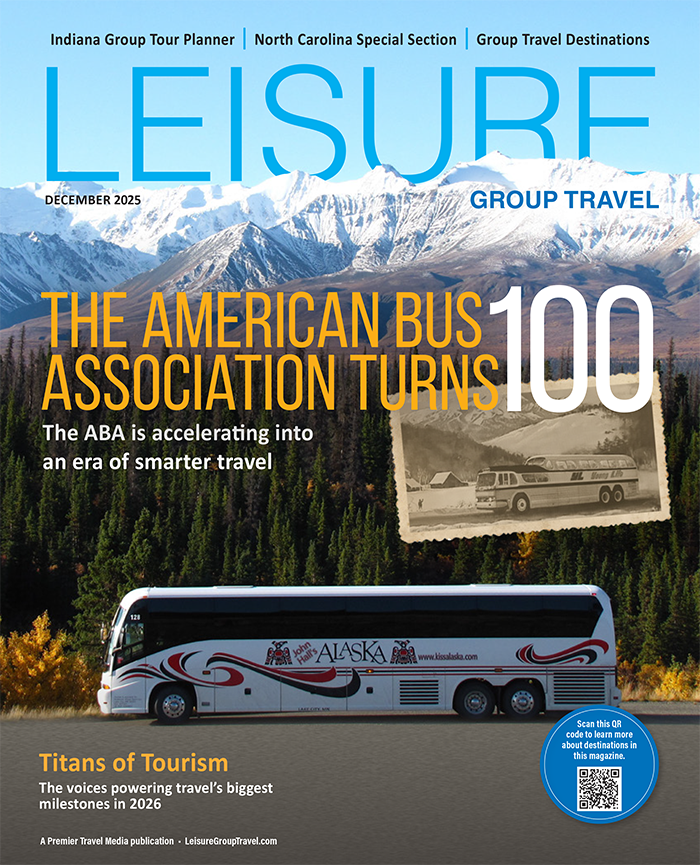How AI and LLMs are reshaping travel search. Why answers come before links, what GEO changes, and how to stay in the plan with accurate, structured, current information.
By Tyler Drag
Travel is starting above the fold. Type a messy question into Google or an LLM (ChatGPT, Gemini, DeepSeek, Grok and more) and get a clean plan in return. Hotels, routes and personalized recommendations appear in the summary. Clicks to your website come later, if at all. It starts with an answer. Large language models take a messy question—kids, budget, dates, stairs are a problem, please no theme parks—and return a plan that feels finished. Your brand either appears inside that plan, or it doesn’t. That’s seemingly how the game of user search is evolving.
For a full recap of the 2025 Digital Travel Summit, be sure to read the GEO, Agents, and the Evolving Tech Landscape feature recap

What changed—and why it matters
Search used to reward long lists and clever headlines, and those things are not going away, but now user search rewards clarity. Engines summarize first and cite sources after. Travelers accept the draft itinerary, then refine it conversationally to make it as personal as they like: make it walkable, cut the cost fifteen percent, swap breweries for bakeries, translate it to Spanish, and so on.
The decision making is moving upstream, as AI summaries and agents now propose neighborhoods, hotels, routes, prices, and policies inside the results. Users accept or refine from there. By the time they visit a site, the shortlist is set. The booking follows. If your facts are old, vague, or scattered, then you get skipped with all the indifference of a N.Y. cab that didn’t see your hand go up.
GEO vs SEO (Queue the Moral Combat Theme Song)
Call it Generative Engine Optimization. The work is unglamorous but becoming more essential. Ensure your public facts—names, hours, prices, fees, policies—match across your site, maps, directories, and reference pages. Mark up core products and places so LLMs easily understand them. Write FAQs that answer the questions travelers actually ask vs the questions you want them to ask, with dates and numbers instead of soft promises or sales pitches. Keep Wikipedia and major listings tight. Fresh media helps when it comes labeled with the right words. None of this wins applause. It earns inclusion.
GEO and SEO (Search Engine Optimization) aren’t exactly competitors; they’re becoming more like one workflow viewed from two angles. SEO still earns discovery and clicks with intent-driven, crawlable, high-quality pages. GEO extends that work so the same truthful content is machine-legible and consistent across your site, maps, OTAs, Wikipedia/Wikidata, and directories—using schema, canonical facts, and off-site alignment—so AI summaries and agents represent you correctly. Think “pages and entities”: comprehensive guides that rank, plus structured fields for prices, policies, amenities, hours, and accessibility that engines can transform into personalized answers.

How travelers really use AI now
They don’t read a dozen tabs. They talk to the machine like a seasoned concierge. “Three nights in March, two adults, one six-year-old, near light rail, wheelchair accessible, no rental car, cap us at $900.” The first answer is a sketch. The follow-ups turn it into a plan. People still click through when money is on the line (for example cancellation, deposits, pet policies), but only after the model narrows the field. If you’re not legible at that first cut, you don’t survive long enough to show up when the client is serious about doing business.
Tripadvisor, agents, and the upstream itinerary
Partnerships between answer engines and major travel platforms pushed planning even further from the old SERP. Agents can already compare options, check rough prices, and assemble a day-by-day outline before anyone visits your site. That doesn’t kill websites. It forces them to behave like reliable data stores. Clear locations, amenities that mean the same thing everywhere you list them, room types that match across channels, “last updated” dates that a human and a bot can both read. Feed the agent truth and you get pulled into the itinerary. Starve it and you disappear without drama.
What to do next
Start with an audit of your public facts and fix conflicts across your site, Google Business Profile, OTAs, and reference pages. Add or tighten schema on products, places, events, reviews, and FAQs. Package your highest-value topics as repeatable “content kits”—short video, a handful of stills, a transcript, a fact box, and a canonical page that stays fresh. Version your on-site assistant prompts like code and keep a rollback plan. Then pilot one agent-friendly flow end to end—two-night family weekend on a budget, wheelchair-accessible museum day, pet-friendly golf package—and measure the friction. Trim until an agent and a human both glide through.
The short version: decisions happen before the click. Be accurate where those decisions form. Be structured so machines can see you. Be current so travelers don’t get burned. If you do that, you stay in the plan and you earn the booking. If you don’t, the tide keeps moving and no one files a complaint. They just go elsewhere.
For a full recap of the 2025 Digital Travel Summit, be sure to read the GEO, Agents, and the Evolving Tech Landscape feature recap







